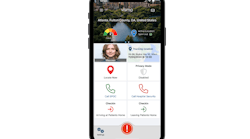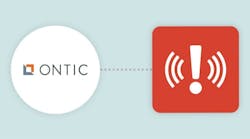Emergency situations are unpredictable, but your emergency mass notification system (EMNS) shouldn’t be. Whether it is alerting employees to power down computers due to a ransomware attack, notifying mobile workers of imminent severe weather, or sending out critical notifications during an active shooter event, your system must be accurate, fast and reliable.
As you’re evaluating notification systems, look for one that you can depend on in an emergency- one that is reliable and easy to use with the ability to send and receive messages to and from your entire contact database or any subset of it. Not all notifications systems are suitable or up-to-date for today’s ever-growing list of emergency situations, so make sure yours is by insisting on these five emerging capabilities:
IoT Triggered Notifications
Internet of Things (IoT) unlocks a host of new applications for EMNS. The ability of IoT platforms, such as devices and sensors, to send notifications based on operator-configured rules or triggers allows users to automate actions that occur under specific application scenarios in order to speed response.
Think of what Amazon has done with its Dash buttons that enable consumers to, in effect, press a button linked to their accounts to trigger the reordering of a broad range of household items. These types of physical buttons can be applied in an enterprise setting to trigger specific mass notifications in real-time. For example, an IoT-enabled button could be placed under an office reception desk that a receptionist could push if an unauthorized individual enters the premises. These buttons could also be used at building entry points to prevent potential emergency events.
With the IoT market expected to reach $267 billion by 2020, there will be an ever increasing trend to further integrate the hundreds of billions of IoT devices into EMNS platforms in order to provide early warning systems and other automated/trigger based reporting options.
Message Approval Workflow
Businesses using mass notification systems to quickly alert employees when emergency events arise have witnessed the panic and confusion that results when inaccurate or unauthorized notifications are sent, like the Hawaii false missile alert or a hacker triggering a false mass alert.
Whether the mass notification failures are accidental or intentional, the consequences underscore how critical it is for organizations to have a built-in message approval workflow based on user roles and event scenarios. Ensuring that your EMNS has this capability is crucial to reducing the risk of unauthorized or inaccurate mass notifications being sent out to employees, partners, customers and other stakeholders.
Message approval workflow capabilities are most effective when the system can allow designated users to easily review, approve, reject, or edit an alert before it is publicly released, ensuring the message is sent at the right time to the right people and is easily managed within your user interface. By defining role-based and scenario-based permissions, your organization can significantly reduce the likelihood that a notification is distributed in error, or by an individual not authorized to do so.
Integration with IT, Cyber Business Processes
Enterprise notification systems can no longer exist in a silo. The threat landscape decision makers must navigate has grown increasingly complex and touches a broader range of business functions. At the same time, there is a desire to utilize notification systems for more than just emergency events.
An example of this is the use of automated IT incident management alerts and notifications to improve day-to-day business operations and productivity. IT personnel typically don’t have the time to identify an incident (cyber breach, outage, etc.), then manually launch and monitor responses from a notification solution. By integrating notification systems with IT business processes, automated alerts can be sent to the appropriate staff, taking into account whether they are on duty, on call or out of office. This lets recipients quickly fix problems before they cause downtime or delays and ultimately delivering a recognizable return on investment by reducing response time for IT incidents.
Two-Way Communication
Prevailing perception of emergency notification systems is that they are designed to enable one-way communication from alert originator to recipient. But the inability for recipients to respond to notifications reduces enterprise visibility.
To have true “communication” it must be two-way. In a notification system, that means that your message recipients need to have a way to reply to your message. Two-way communication is imperative when a fast response is needed to questions such as, “were you able to evacuate to a safe environment?” or “what is your current location?” Two-way communication also allows you to coordinate with others and gain a 360-degree perspective of the situation. Not only does this reduce confusion and misdirected response efforts, but it also ensures that you’re making informed decisions based on real-time updates.
Automate Notifications
An EMNS system that still places a heavy manual burden on users to configure and manage will prevent businesses from fully maximizing the benefits that notification systems can provide. Automation shortens the time between the occurrence of an event or incident and the resolution of that incident. This requires removing as many manual steps as possible by automating alerts based on predefined rules and event triggers.
Automated notification enablement requires a process for messaging that identifies who should get the notification, what the message should say, when it should be delivered and when escalation might be required. Key to effective use of automated notifications is the ability to tailor the automation based on appropriate recipient groups, nature of the event, and other rules your organization construct to make sure the right individuals get the right message at the right time.
Remember, as you are assessing notification systems for your organization, look for ones with modern capabilities that you can rely on in an emergency. Extending beyond basic alerting and features is crucial for an organization to be prepared for unexpected events. By establishing a system with IoT triggered notifications, message approval workflow capabilities, two-way communication and automated messaging combined with IT integration, your organization will be well equipped to handle any emergency, big or small.
About the Author:
Daniel Graff-Radford is the Chief Product Officer at OnSolve.


